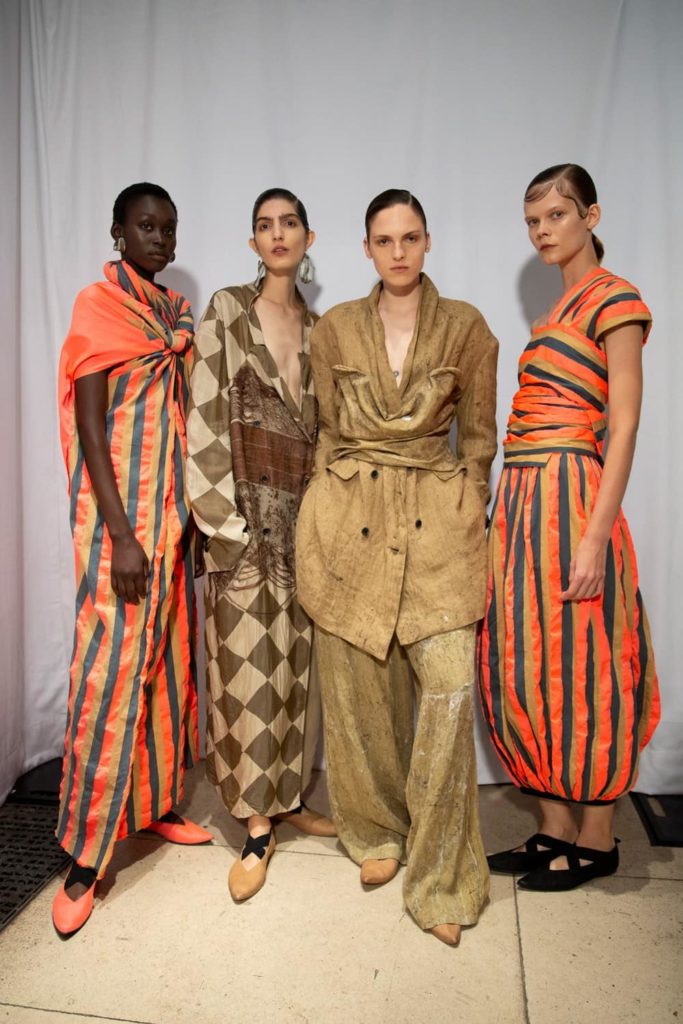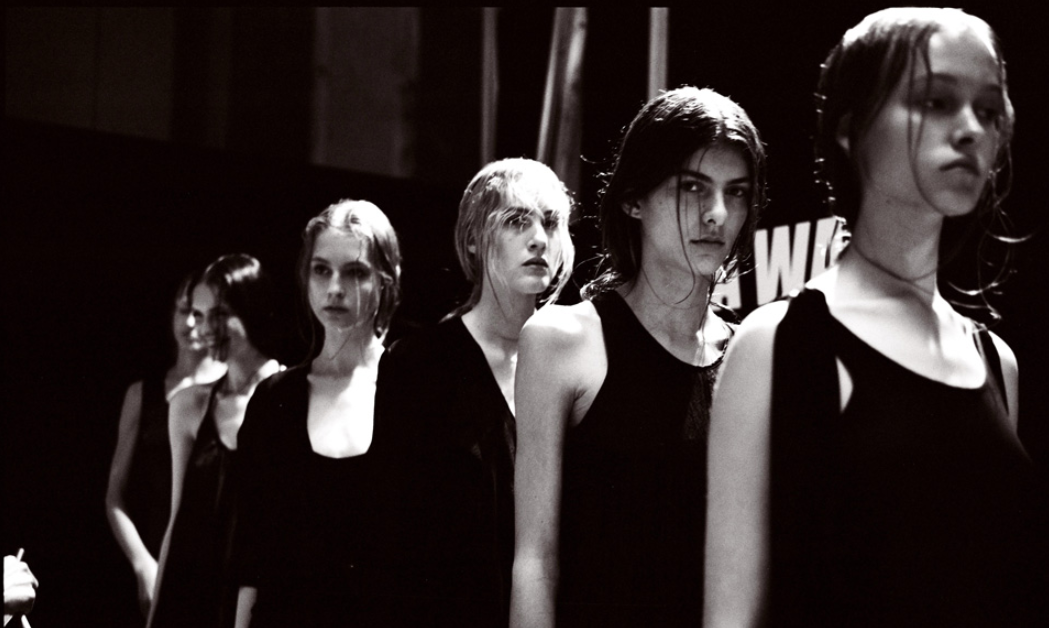The main changes in Western fashion trends are the rapid development of online fashion, a serious leap in environmental practices and the growth of the secondary clothing market. According to a global consumer study by Criteo, after the pandemic, new customers will remain with online clothes retailers with a 63% probability.

Data Source: Criteo, During the peak of COVID-19 change in shopping habits
Current Western fashion trends
There are several key themes in Western fashion trends:
Sustainability – The sustainability trend in fashion has been a key one in Western fashion for several years now. One of the first to develop eco-style was Stella McCartney, who in the mid-2000s founded the fashion house of the same name, whose philosophy is based on the principles of environmental friendliness. Sustainable fashion is developing in the following directions:
- Use of organic, vegan (obtained without killing animals) and recycled materials;
- Support for small local producers and compliance with labor protection measures;
- Slow fashion – reducing the number of items used and increasing the life cycle of clothes.
- Second-hand shopping or exchanging old clothes
Capsule collections – one of the Western fashion trends is capsule collections. This is a consequence of sustainability in fashion. The capsule satisfies the needs of one of the spheres of life and is a set of things that are easily combined with each other. They are united by a single style, a limited range of colors and a purpose for a specific purpose. Usually, not one clothing capsule is compiled, but several for different tasks: work, walks, hobbies, and so on. Basic things become components, a kind of fulcrum for any of the capsules, but not style-forming. Currently, a large number of mass-segment brands offer capsule collections. Therefore, it is not difficult to choose clothes that match each other in Zara or H&M, because the capsules presented there include things that are combined both in color and style. A similar approach is typical for many luxury brands.
Minimalism – it is no longer in the form of the usual Scandinavian monochrome, but is reborn in new silhouettes and brighter colors.
Neo-romanticism with an abundance of ruffles, floral prints, with an emphasis on puffy sleeves and an accentuated waist became trendy.
Streetwear, reached the point of complete denial of style – T-shirts, sweatshirts, sweatshirts.
How pandemic influenced the Western fashion to be more comfortable
Some trends became very hot recently, in particular, the segment of home and semi-sportswear. The change in lifestyle is about new type of things that are convenient for working from home. The main requirements for them are comfort and relative versatility. It means you can move away from the computer, you can do a warm-up, run to the store or connect to a work conference, but still look decent. Judging by the post-quarantine situation, some office workers will remain at remote work and will lose the need for traditional business attire. At the same time, home clothes will turn from pajamas into something more, acquiring such characteristics as multifunctionality, manufacturability, absolute convenience, and attractive appearance.
Online sales and environmental-friendly design define modern Western fashion trends
Online shopping during the pandemic
The growth of online sales could lead to a revival of the trends of the early 2010s, when virtual stores had just opened. That time silhouettes were simple, oversized and prints became catchy and bright – it was easier to sell such clothes online. Minimalism, born in the same era of early Internet shopping, can expect its renaissance, especially against the background of falling incomes of shoppers.
Environmental-friendly trend is growing during the pandemic
The rise of the ecological trend in quarantine was accompanied by talk of universal conscience and entertainment and educational projects on social networks. For example, Monki have posted on Instagram workshops on natural dyeing of fabrics – and how the transition to recycled and organic materials affects the design.

Source: Monki Instagram, a sustainable fashion brand
Second-hand is getting bigger
A published report by ThredUp and GlobalData Retail assures that by 2029 the average consumer’s wardrobe will be 17% second-hand, up from 3% in 2009. There are two factors that influence the interest in second-hand goods: a decrease in income and an increase in consumer responsibility. It, in turn, also affects clothing design – from erosion of trends to their complete rejection. It is the consumer who today becomes the protagonist of fashion collections, brands even launch joint projects with the customers. For example, Helmut Lang organized a competition for the best prints, and Russian Radical Chic gave their subscribers the opportunity to offer ideas for drawings.

Data Source: ThredUp, Online Thrifting is a Bright Spot in Broader COVID-19 Retail Slump
Difference between Chinese and Western fashion trends
One of the global trends after the fateful 2020 is a slowdown. In global fashion, it is a passion for traditional techniques, thanks to which an ordinary thing looks like a hand-made one. We can see it both in Chinese and Western fashion trends.
However, there are some points that differ the Western fashion trends from Chinese ones.
- West textures are plain, while in China they are busy with words, texture and ruffles..
- Western fashion cares more about environment, sustainability and ethics.
- Westerners invest less of their paycheck in luxury than Chinese.
- West often shows more skin, can be sexier than Chinese.
- Western fashion is often more ‘mature’ and ‘classic’ where Chinese fashion is often more ‘princessy’ and ‘cute’.
- Western fashion more often includes agender style – a direction in clothing that does not imply a division of wardrobe into men and women and seeks to create universal and inclusive things.
Luxury fashion: How Uma Wang conquers the western fashion world

Source: The Impression, Uma Wang collection Spring 2020, a Chinese designer who is successful in the west
Uma Wang is a women’s brand by Uma Wang, a graduate of China Textile University and Central Saint Martins. Combining textures and fabrics in a unique way, Uma Wang achieves a phenomenal balance between Eastern and Western cultures. Paying tribute to the East and respecting the West, the designer creates collections that are not subject to trends. Silk, velvet, cashmere, organza are constant companions of her collections. For the production of most trousers, dresses, tops, jackets and blouses, the brand’s craftsmen use selected Italian textiles based on flowing silk, delicate viscose, fibrous linen or a combination of these materials. Outerwear consists of textured velvet or dense jacquard with a floral motif. In seasonal collections, the Uma Wang brand often includes non-standard women’s items, for example, a coat made from chiffon.
